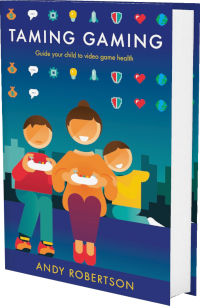 Android
Android iOS
iOS Mac
Mac Switch
Switch Wii
Wii Wii U
Wii U PC
PC PS4
PS4 PS5
PS5 Xbox One
Xbox One Xbox X|S
Xbox X|S10/01/2021 3 years ago Author: Andy Robertson
In addition to the Accessibility section for each game, some systems provide built-in accessibility features. The advantage of these is that they will generally work on every game. The downside is that they are not tailored to a specific gaming scenario.
Remapping buttons, for example, is provided but does not update button prompts in games and often doesn’t have any ability to store different control setups for different games. Even features like zoom, vary considerably with some options (Nintendo Switch) allowing you to lock the zoom and others (PlayStation 4) offering a temporary magnification Still, these settings to provide more options even if they aren't always perfect.
Some system-wide adjustments sound good, like closed captions or high contrast, but don’t apply to games; closed caption settings apply to films rather than games, and high contrast applies to system menus only, not visuals of games.
Nintendo Switch
Although not as comprehensive as some, the Nintendo Switch does now have some features via the System Settings.- Controls: Remap Buttons: Change button mapping for the system as a whole. This also enables you to disable buttons so they are not pressed by accident. You can also duplicate buttons to make it easier to access a single in-game action from two buttons. Disable Rumble: Turn off vibration feedback.
- Image Calibration: Adjust the visual output of games as well as system menus with the following. Zoom: Enables the ability to zoom into a portion of the screen by pressing the Home button twice quickly during games. It can be locked in place, allowing play while zoomed. Colours: You can invert the colour spectrum, including light to dark, like the negative of a photo. You can remove all colour. Screen brightness: Select auto-adjust brightness or choose a fixed level yourself.
- Audio Calibration: Mono: TV sound settings, offering a choice between mono, stereo and surround.
- Difficulty: Rewind: The NES and SNES classics games that come with Nintendo Online all have the ability to revert to save and start again from any point, making them substantially easier.
Xbox One
The Xbox One offers an extensive range of accessibility options via the Settings menus, mostly within the Ease of Access menu:- Reading: Narrator: Enables you to have the text of all system menus to be read by a computer voice. The setting also enables narration across a small number of games. Game transcription: Enables translation between text and voice in a small number of games.
- Controls: Map Buttons: Remap buttons, swap sticks, and turn vibration off. Controller | Copilot: Splits one player’s controls across two controllers. Useful for a second person jumping in to help, or a single person to divide controls between different areas of their body, like one controller in a hand and another under their foot. Share controller: You can broadcast your game to another person who can then control the same character, and assist with certain aspects of control. Like co-pilot when not in the same place.
- Image Calibration: Magnifier: Makes one part of the screen larger, including during games. It can be locked in place, allowing play while zoomed. It also includes options for the zoomed area to follow where the currently highlighted menu item is, and the option to make the on-screen keyboard bigger. High Contrast: Adjusts the system menus only, to high contrast black and white. Notification location: Adjust location of notifications on the screen, to avoid them getting in the way of subtitles, for example. Their duration can also be configured, and they can be turned off completely.
- Audio Calibration: Chat Mixer: Adjust the comparative volume of chat and game sounds. Speaker Audio: stereo or surround. Mono Audio: Select all to play out of all speakers, rather than stereo separation.
PlayStation 4
The PlayStation 4 offers a range of system-wide accessibility options via the Accessibility menu:- Reading:Text to Speech: Enables some on-screen text in the system menus to be voiced. Does not cover all menus and does not cover games. Also, it's only when the system language is set to English (United States).
- Controls: Remap Buttons: Reassign buttons to make games easier to play. Press and Hold Delay: Set how long you need to hold the PS button or SHARE button. Keyboard: Set the key mapping for keyboard and mouse. Set how long you hold a key for it to repeat. Specify pointer speed. Voice: You can control the PlayStation system with voice controls.
- Image Calibration: Zoom: Set an area of the screen to magnify. While zoom is available in games, unlike the Switch and Xbox One you cannot set a zoom level, lock it, and play zoomed - you must exit zoom to be able to access the game's controls. Invert Colours: Reverses the colour spectrum, including light to dark, like the negative of a photo. This works in games as well as the system. Large and Bold Text: Change system text readability. High Contrast: Change contrast for visibility of system menus, not in games. Auto-Scroll Speed: Change how quickly moving text on system menus moves.
- Audio Calibration: You can disable the system music via Settings | Sound and Screen. Text to Speech: Enables on-screen text to be voiced.
PC
Windows has extensive accessibility features, some that work with games like colour correction. There is a huge range of accessibility software that can be used with PC games, from voice recognition to input device emulators.- Reading: Narrator is a built-in screen reader.
- Controls: Adjust mouse pointer size and change its colour. You can turn on additional visual feedback when the pointer is over part of the screen. You can run games in windowed mode, that means you can use a mouse-controlled on-screen keyboard, for example.
- Image calibration: Size: Adjust size and colour of the text. Adjust the overall magnification of display. Select a high contrast setting. Colour Filters: Apply colour filters.
- Audio calibration: Closed Captions: Provides visual description of audible events as subtitles. You can adjust colour and caption transparency. Audio Alerts: Show audio alerts visually.
iOS
iOS devices, iPhones, iPads and iPod Touch devices have good accessibility built-in.- Reading: Voice Over: Reads out to you what you touch without needing to see it. But only applies to system menus and a small number of games. Larger Text: Setting to make text larger in games.
- Controls: Guided Access: Limits interactions to certain controls and areas of the screen to ensure accidental gestures that might navigate away from (or confuse) a game are less of an issue. Switch Control: Assign certain inputs to Bluetooth switches to cycle through and select items (item scanning, point scanning, manual selection) with a single button. Assistive Touch and Accommodations: Adjust touch controls, holding requirements and sensitivity. Voice Control: Navigate interface using voice commands. Other Controllers: You can also connect PlayStation, Xbox and other controllers. Mouse and keyboard supported in some games.
- Image Calibration: Zoom: Magnify a portion of the screen. Reduce Transparency: Improves contrast by reducing blurs on backgrounds to increase legibility. Smart/Classic Invert: Reverses display colours intelligently/everything.
- Image Calibration: Zoom: Magnify a portion of the screen. Reduce Transparency: Improves contrast by reducing blurs on backgrounds to increase legibility. Smart/Classic Invert: Reverses display colours intelligently/everything. Colour Filters: Shifts the colour spectrum, which can help some colourblind people in some circumstances. Bold text, high contrast, reduced transparency and button shapes to increase the visibility, but just system menus. Reduce motion, to alleviate motion sickness that system menu animations can cause.
- Audio Calibration: Mono: All the sound through both headphones so you don’t miss anything. Hearing Aid Support: Direct connection to Bluetooth hearing aids.
Android
Android devices have accessibility settings that mainly apply to the system:- Reading: TalkBack: Spoken feedback and notifications in system menus and a small number of games. Select to Speak: Touch items on your screen to hear them read or described aloud.
- Controls: Voice Access: Control with spoken commands when you install a separate app. Switch Access: Interact using one or more switches instead of the touchscreen. Mouse and keyboard fully supported.
- Image Calibration: Magnification: Temporarily zoom or magnify your screen. You can continue to interact while zoomed. Contrast and Colour: Access high-contrast text and dark theme apply just to system menus. Colour correction and colour inversion apply to games as well as system. Accessibility timeout: How long to show temporary messages. Display and Font: Change the size of items and fonts in system menus.
- Audio Calibration: Sound Amplifier: Use Sound Amplifier with wired headphones to filter, augment and amplify the sounds in your environment. Mono: All the sound through both headphones so you don’t miss anything. Hearing aids: Direct connection to BlueTooth hearing aids.
PlayStation 3
This system supports accessibility in the following ways:- Controls: Controller Vibration: Can disable controller rumble via Accessory Settings menu. Keyboard: Set the key mapping for keyboard and mouse. Set how long you hold a key for it to repeat. Specify pointer speed.
- Audio calibration: Can select mono audio for all games. Also sound is provided through controller jack.
Wii U
This system supports accessibility in the following ways:- Controls: Can disable rumble on controllers and gamepad. Adjust Wii Remote controller volume. But there's no system-wide remapping of buttons or sticks. You can adjust the Wii Remote pointer sensitivity.
- Image calibration: Adjust gamepad screen brightness. You can set output resolution for the system.
- Audio calibration: Can select mono audio for all games. Also sound is provided through TV, the tablet, or both. Tablet controller provides sound output jack.
- Difficulty: Virtual Console: The virtual console games all have the ability to revert to save and start again from any point, making them substantially easier.
Wii
This system supports accessibility in the following ways:- Controls: Can disable rumble on Wii Remote controllers. Adjust Wii Remote controller volume. But there's no system-wide remapping of buttons or sticks.
- Image calibration: You can set output resolution for the system.
- Audio calibration: Can select mono audio for all games.
© 2024 Family Gaming Database












